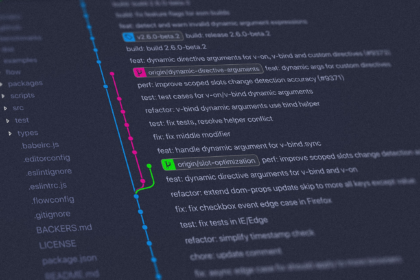
Software documentation tools give DevOps teams an organized, clear approach to company documentation. Recording business processes—particularly software installation, development, and updates—are critical for enterprises as they keep remote team members informed and reduce process silos. In enterprise environments where teams can’t keep up with the volumes of procedures to follow, digital documentation offers organization and structure. Documentation tools provide a repository of internal articles for employee reference, with the option to create customer-facing documentation as well.
Also read: 7 Things to Know about Low-Code Development
Table of Contents
Software documentation tools are applications that provide content creation, collaboration, and organization capabilities for software developers to maintain software and write programs. Documentation includes lists of instructions with helpful tools, such as videos and links, so developers can quickly access and update processes. Many documentation tools aren’t just for developers, either: technical writers and other employees within an organization also use them to document company processes that don’t involve software development or engineering.
The main benefits of documentation tools are:
Apiary is a documentation tool designed specifically for software developers and API creation. It’s not only for documenting data but also for designing and testing APIs. Customers can make a server mock for API design available for their team members or clients, so they can try out the API. They also have access to an open-source blueprint with server mocks, validations, and code samples through an integration with API Blueprint.
Users can link Apiary to their chosen GitHub repository, which then updates commits when users update their Apiary documentation.
The Apiary CLI Gem tool provides command line capabilities like automating workflows, validating blueprints, or previewing a document. Developers can send API calls through a debugging proxy that reveals detailed data to help them fix problematic calls.
Key differentiators:
Also read: Best API Management Software & Tools
Bit is a documentation tool for teams that need to segment and organize their documents and collaborate with both employees and external users. For organizations that need to regularly share documents with third parties, Bit provides features like guest access and permissions. Employees, clients, business partners, and contractors can be added as collaborators within the software.
Users have access to a sizable template gallery. The template options for formatting text, designing a theme, and adding content like tables are reminiscent of WordPress’s interface.
designing a theme, and adding content like tables are reminiscent of WordPress’s interface.
The document design interface also transforms inserted links into embedded visuals. Bit has document tracking features that reveal user behavior, like scroll distance. It also allows businesses to insert custom lead capture forms into their documents.
Key differentiators:
Also read: Best Document Management Systems & Software
ClickHelp is a documentation tool designed for technical writers to create guides, user manuals, and knowledge bases. ClickHelp allows writers to collaborate with other business departments to do so. Content creators have the option to migrate existing content from Word, Open Office, HTML, and CHM file extensions into the documentation tool.
ClickHelp offers six user interface templates for designing a reader interface. Customers also receive a custom domain name and have the ability to customize colors and backgrounds for their documentation.
backgrounds for their documentation.
ClickHelp offers features such as video support and feedback forums. Users have access to a Live Chat integration, so their clients can speak with a chatbot or a live agent.
ClickHelp has hosting facilities in multiple geographic locations and regularly makes encrypted backups of user data. This decreases the likelihood of data loss from natural disaster and provides enterprises with recent data if they lose documentation.
Key differentiators:
Also read: Best Chatbot Platforms & Software
Confluence is a documentation tool offered by Atlassian. It includes project management features like team notifications and spaces, which organize documents, team members, and projects. Confluence’s labels and page hierarchy make document organization easier, allowing technical writers and software developers to design professional-looking content.
Confluence also integrates with Jira Service Management, a help desk tool also offered by Atlassian, allowing customers to create a knowledge base for their IT service desk. This allows company employees to have access to documentation when they come to the service desk with technical difficulties in case something can be solved through documented instructions. Confluence Cloud Premium for larger organizations provides analytics such as page and site reports, and it allows editors and admins to set aside outdated pages with Bulk Archive.
service desk with technical difficulties in case something can be solved through documented instructions. Confluence Cloud Premium for larger organizations provides analytics such as page and site reports, and it allows editors and admins to set aside outdated pages with Bulk Archive.
Atlassian also offers a free version of Confluence, which is available for up to 10 users. Confluence is one of the only products on this list that allows companies to have this many free users. The free plan also includes 2 GB of storage.
Key Differentiators:
Document360 is a documentation tool particularly for content creators such as writers and editors to design internal business and software documentation. Document360 offers Knowledge Base Assistant, an automated customer assistance tool that can be added to your website. It provides article suggestions based on the user’s current URL parameters. For users who want more advanced branding options, Document360 offers Custom CSS and JavaScript.
The Knowledge Base Portal is Document360’s content management tool. Content creators have the option to create up to six categories and subcategories to group related topics. They can also choose between the Markdown editor and the WYSIWYG editor, depending on which they prefer.
have the option to create up to six categories and subcategories to group related topics. They can also choose between the Markdown editor and the WYSIWYG editor, depending on which they prefer.
Users are also able to schedule automatic backups of their documentation progress. If they unexpectedly have to leave a document unfinished, the most recent backup of the content will be saved.
Document360 offers integrations with tools like HTML and Hotjar and Marketplace Extensions for Zendesk, Slack, and other helpdesk and communication tools.
Key Differentiators:
ProProfs Knowledge Base offers software documentation, knowledge base and help center design, and instruction manual creation. The documentation tool includes SEO features like embedded tables of contents and crosslinking for businesses that want to make their documents searchable on the internet.
The documentation authoring tool supports video and audio clips, and finished documents are compatible with mobile views. Including media content and making content mobile-friendly gives users more ways to understand and view documentation, especially while on the go. ProProfs also makes advanced content creation features available: users can add tooltips, lightboxes, and popups to give additional context to technical terminology or concepts.
the go. ProProfs also makes advanced content creation features available: users can add tooltips, lightboxes, and popups to give additional context to technical terminology or concepts.
ProProfs gives organizations access controls, including the option to monitor access and restrict users’ edit capabilities depending on what section of the document they’re editing. The documentation authoring tool also includes editor tracking and version history control, revealing exactly what edits users made so businesses can track who changed every piece of content.
ProProfs also has templates for specific departments, like HR and IT: these templates specifically cater to teams’ needs. For example, the HR template includes an employment policies section.
Key Differentiators:
Also read: Access Control Security Best Practices
Tettra is a knowledge base, knowledge management, and business wiki solution for businesses of all sizes. It’s a good choice for small businesses because it offers a limited free plan and supports internal wikis for multiple collaboration tools.
Tettra allows businesses to maintain a long-term verification schedule for knowledge articles, so they remain up to date over time. Page requests also have three different user permission levels, allowing users to request the specific type of access they’re permitted to receive.
articles, so they remain up to date over time. Page requests also have three different user permission levels, allowing users to request the specific type of access they’re permitted to receive.
Organizations use Tettra to create wikis for Slack, Google Workspace, and Microsoft Teams. Users are able to design internal knowledge management systems for their company, which suggest document cleanup features and permit employees to request new pages or updates.
Tettra is designed to work with Slack, including slash commands within Slack that allow users to search Tettra content within the communication tool. Tettra also offers an internal Q&A solution, which allows users to answer employee questions with a Tettra documentation page.
Tettra offers small startups a free plan for up to ten users, with limited features such as a Google Workspace integration, live chat support, and new page and page update requests.
Key Differentiators:
Also read: Best Project Management Software
Software documentation tools typically include a standard set of important features for designing documents.
Templates allow content creators to quickly design documents without needing to code it by themselves. Documentation tools often offer different template styles so that teams have better customization options, too.
The ability to leave notes, tag teammates, or manage version history makes working with others on documents easier. Users can more quickly notify other collaborators within a document and leave information for them when they return to an ongoing project.
For software developers, an integration with a tool like GitHub is particularly useful: it’s a collaborative repository of code that supports change tracking and open source projects. Integrations with tools like Slack and Teams allow teams to complete documentation work within their everyday communication software.
For enterprises, documentation tools provide a repository for detailed instructions for technical procedures and make the distribution of employee information simpler.
Process documents help reduce silos between departments. If every employee has access to process documents, everyone will know the same set of directions.
Documentation helps developers and engineers navigate advanced dev tasks, including software installation and design. It’s useful for other teams, such as an editorial department that needs detailed instructions for publication processes.
A repository of content that clearly explains company processes, with videos and helpful popups, allows new team members to learn business processes and expectations and refer to the documents whenever they need a reminder.
Enterprises often need external articles, too. They help businesses:
Failing to update documentation can mean a significant waste of employees’ time, as they’re forced to hunt down information on their own. This is a widespread problem, too, according to tech journalist Jack Wallen: even major companies like Kubernetes don’t always keep their documentation up to date.
Although software development has generally outpaced documentation, keeping clear, updated records of applications and processes is still a critical task for organizations that want to give employees the instructions they need to perform their job.
Read next: Why Low-Code/No-Code is Revolutionizing App Development
CIO Insight offers thought leadership and best practices in the IT security and management industry while providing expert recommendations on software solutions for IT leaders. It is the trusted resource for security professionals who need to maintain regulatory compliance for their teams and organizations. CIO Insight is an ideal website for IT decision makers, systems integrators and administrators, and IT managers to stay informed about emerging technologies, software developments and trends in the IT security and management industry.
Advertise with TechnologyAdvice on CIO Insight and our other IT-focused platforms.
Property of TechnologyAdvice.
© 2022 TechnologyAdvice. All Rights Reserved
Advertiser Disclosure: Some of the products that appear on this site are from companies from which TechnologyAdvice receives compensation. This compensation may impact how and where products appear on this site including, for example, the order in which they appear. TechnologyAdvice does not include all companies or all types of products available in the marketplace.




